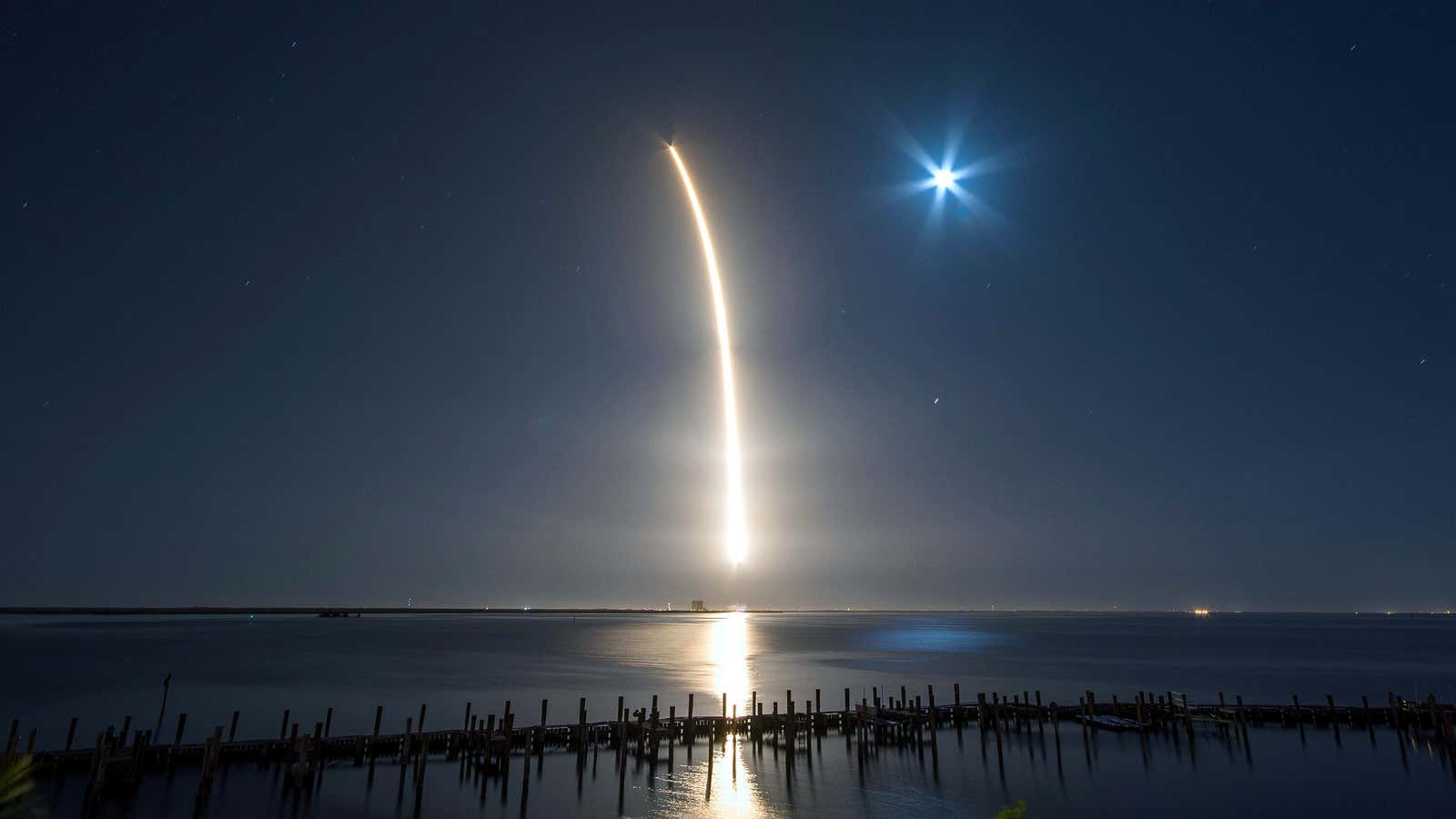Elon Musk’s space aspirations are focused on Mars, and now his rocket company is helping NASA scientists hunt for planets far beyond our own solar system.
After a two day delay to address concerns in the rocket’s guidance, navigation and control systems, a Falcon 9 is expected to lift off today at 6:51 pm ET to put TESS—the Transiting Exoplanet Survey Satellite—into a “highly elliptical orbit” that will allow it to spend most of its time far above Earth, giving it a better view of the cosmos.
Beginning about 15 minutes beforehand on SpaceX’s livestream, you can watch the launch and the company’s attempt to land the first stage of the rocket on an autonomous drone ship in the Pacific Ocean for future re-use:
TESS’s job is to spot distant planets when they pass in front of even more distant stars, a movement known to astronomers as a “transit.” The MIT researchers behind the project expect to catalog thousands of new planets smaller than Neptune, and perhaps dozens comparable to Earth, which can then be studied with other instruments. This is the first time that humans have used an orbiting surveyor to search nearly the entire sky for new planets, compared to previous efforts that have scanned just a tiny percentage of what we can see.
Ultimately, this is part of a broad effort by NASA, MIT and scientists around the world to scout out planets that may suitable for human—or other—life.
For SpaceX, this is the first exploration mission launched on behalf of the US space agency. Its previous work has come in servicing the International Space Station and launching satellites that look down to study Earth, like Jason-3 or DSCOVR. This will be the eighth launch for SpaceX this year as it pushes to break its previous record of 18 annual missions and aims at 30 trips to orbit in 2018. A new fundraising round has made SpaceX one of the most valuable start-ups in the world.
Musk has emphasized the importance of making the entire rocket, and not just the first-stage booster, reusable, and said on Twitter yesterday that the company was developing a plan to recover the second stage of the rocket using a “giant party balloon.” In a briefing, SpaceX chief engineer Hans Koenigsmann said that wouldn’t be attempted on this mission. The second stage will be flown to a disposal orbit, out of the way of operational traffic, after the satellite is deployed.
Since this is a government-authorized mission, viewers should be able to keep watching the whole show without any surprise restrictions from NOAA, the US weather agency that put a damper on SpaceX’s last launch video.
This post has been updated to reflect a two day launch delay.
